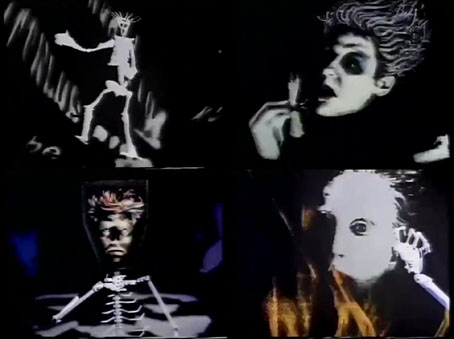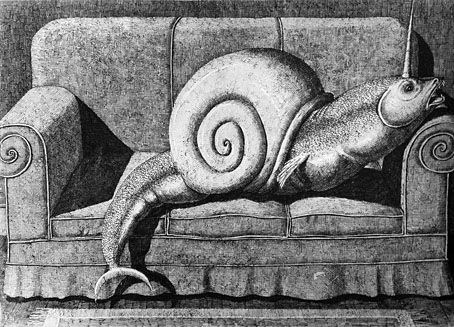The punning title embraces a pair of short animations written and narrated by Russell Hoban. Deadsy (1989) and Door (1990) were both directed by David Anderson; notes from a VHS release describe the techniques used:
Deadsy: The film is a graphic interpretation of Russell Hoban’s narration of man’s fascination with weaponry and the sexual power of military aggression. Using a combination of live action, xerography, hand-rendering, laser xerography and model animation, Deadsy is a powerful and disturbing piece.”
Door concerns man’s relentless and impetuous curiosity and the results of his actions when he takes one step too far. It examines our ability to shut our eyes to what those results are, or may yet be. The film employs a mix of animation, pixillation in outdoor locations, animation of photographic images and xerography.
Door is the most impressive of the pair on a technical level, with a complex pixillation choreography that brings to mind similar films by Jan Svankmajer; the keys burrowing through a door might be a scene from Svankmajer’s Alice. The narration, meanwhile, is a typically Hobanesque creation, littered with neologisms like “snivelisation” (is this where Orbital found their album title?), and a flavour of Beat poetry. The dialect and apocalyptic themes place the films close to Hoban’s most celebrated novel, Riddley Walker, for which they might serve as miniature appendices.
Previously on { feuilleton }
• Butcher’s Hook, a film by Simon Pummell




